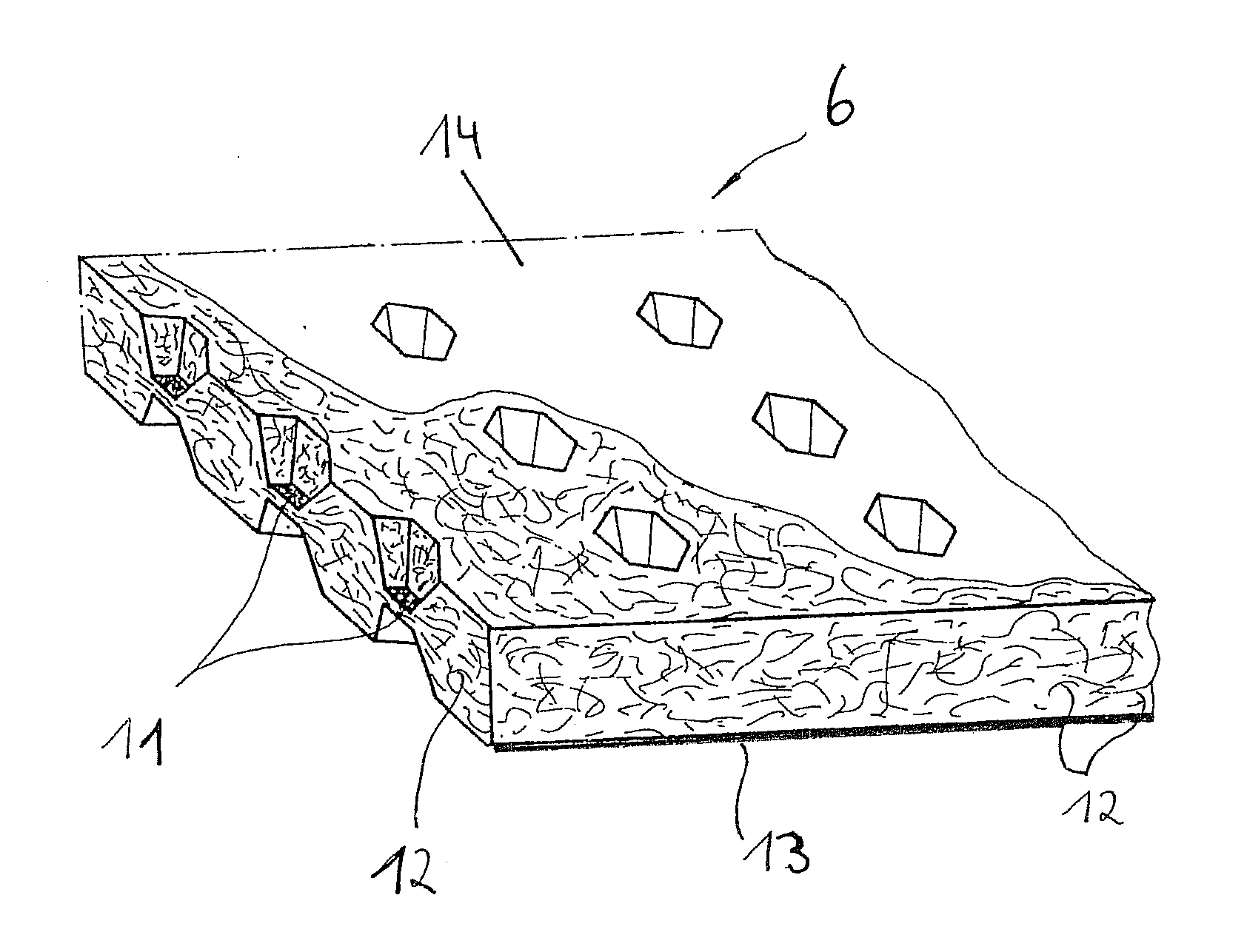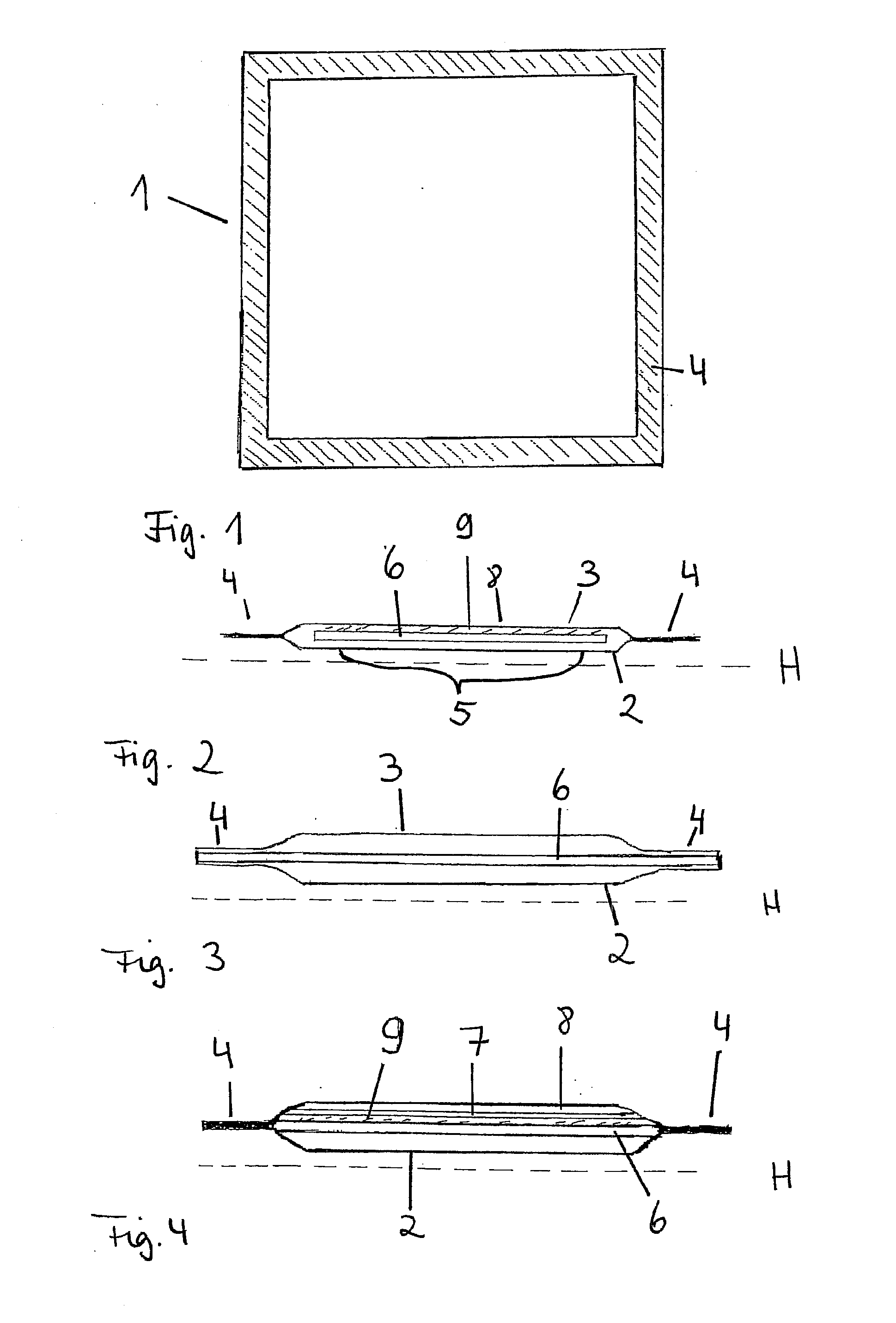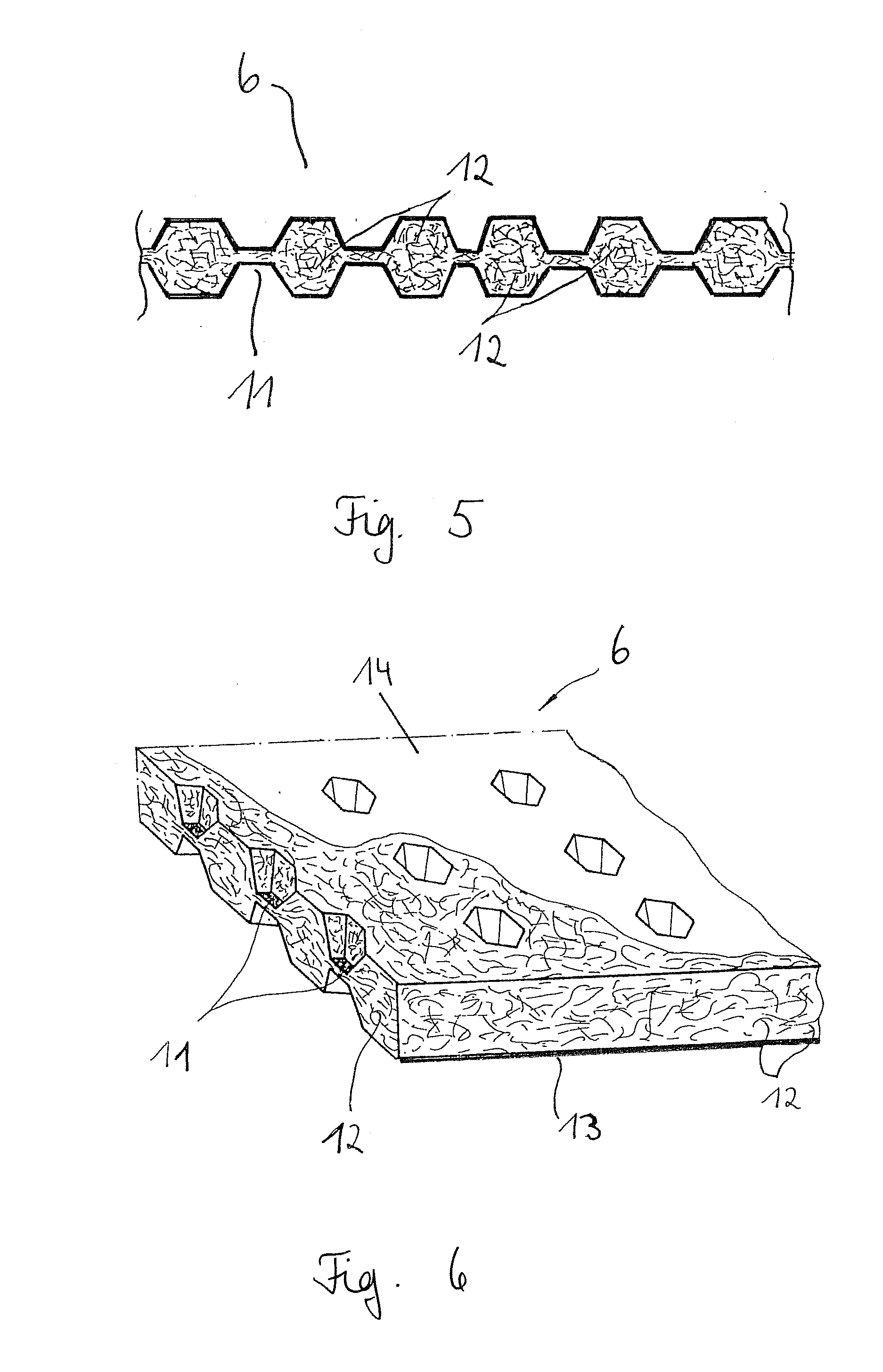Absorption Body for Use on Wounds
- Summary
- Abstract
- Description
- Claims
- Application Information
AI Technical Summary
Benefits of technology
Problems solved by technology
Method used
Image
Examples
Embodiment Construction
[0033]FIG. 1 shows the absorption body 1 according to the invention. The layer 2 (layer A) facing the skin / the wound and a circumferentially extending outer area in which the layer 2 that is facing the skin and the layer 3 (layer B) that is facing away from the skin are connected to each other are illustrated. The layer 2 that is facing the skin is provided on the outer area 4 with an adhesive. The adhesive should be applied only to those areas that will not come into contact with the wound itself. In order not to impair the absorption capability of the absorption body according to the invention, the surfaces of the layer 2 facing the skin should be as much as possible free of any coatings etc. so that the liquid permeability of this layer is maintained.
[0034]In FIG. 2 a possible embodiment of the absorption body according to the invention is illustrated in a schematic section view. The absorption body 1 is a layered configuration of a multi-layer construction with a layer 2 facing ...
PUM
 Login to View More
Login to View More Abstract
Description
Claims
Application Information
 Login to View More
Login to View More - R&D
- Intellectual Property
- Life Sciences
- Materials
- Tech Scout
- Unparalleled Data Quality
- Higher Quality Content
- 60% Fewer Hallucinations
Browse by: Latest US Patents, China's latest patents, Technical Efficacy Thesaurus, Application Domain, Technology Topic, Popular Technical Reports.
© 2025 PatSnap. All rights reserved.Legal|Privacy policy|Modern Slavery Act Transparency Statement|Sitemap|About US| Contact US: help@patsnap.com



